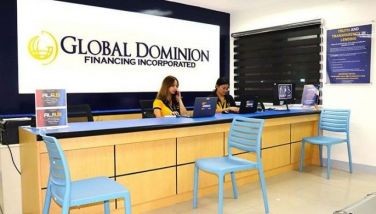Emerging realities in the IT landscape
MANILA, Philippines - The enterprise expectations of IT are broadening, with technology increasingly seen as a key element of business growth and innovation. CIOs are therefore focusing on exactly how technology can be used to proactively drive enterprise results.
As part of this, there are a number of key trends on the CIO’s agenda that serve both as opportunities and challenges as CIOs seek to meet these expanded enterprise expectations.
A recent study by Gartner identified Bring Your Own Device (BYOD) and security as some of these key trends, stating that “(BYOD) policies and tools initially put in place to deal with mobile devices offering consumer-grade security must be revised to deal with these devices being under the ultimate control of a private user, rather than the organization.â€
In what IDC is referring to as the “3rd Platform,†it has acknowledged how cloud and mobility will play a pivotal technological role through “increased use of mobile devices and apps and the migration toward SaaS and industry PaaS,†which “will also drive profound changes in the datacenters and IT organizations supporting these 3rd Platform solutions.â€
For CIOs, the key is therefore how to leverage these trends to the best impact and benefit for the business, while still maintaining vital control of security and manageability. As identified by Gartner and IDC, the four key business growth technology trends in focus for CIOs are:
• BYOD — managing and controlling the proliferation and devices;
• Cloud — managing and controlling application use and protecting data;
• Security — upholding the resiliency of software and hardware; and
• Mobility — understanding how to enhance enterprise mobility.
Even with new technology and trends, business success drivers will continue as they always have done. Do more with less and do it faster. The impact is that CIOs are under constant pressure to efficiently, securely and cost-effectively deal with day-to-day issues affecting their businesses. At the same time, new expectations from the enterprise and its workforce are adding another layer of pressure.
“CIOs are constantly challenged with managing budgets between simply ‘keeping the lights on’ and innovating to meet new business and user requirements. We hear this all the time from our customers across industries; the recent Dell CIO Summit was no different,†said Richard Teo, president of Dell Philippines.
“The summit served as a platform for CIOs to engage in a holistic discussion of the new technologies, trends and the challenges they face. The CIOs also had the opportunity to learn about how Dell’s end-to-end solutions can help them solve these challenges,†Teo added.
Harnessing new ways of communication and collaboration, managing multiple devices, securing numerous platforms, understanding the role of social media in business and enabling secure mobile working models are more than just a vision. These elements represent the arrival and influence of consumerization and for CIOs this means that IT policies and investments, if left unchecked, risk becoming ineffective in supporting and growing the business as the enterprise expects.
What’s the common denominator? As technology becomes increasingly cost-effective and available, more and more people are using technology in every area of their lives. In the same way that people can choose the most suitable and preferred technology in their personal lives, employees expect this same freedom of choice at work to help them get their job done in the most efficient and effective way possible. It’s this combination of technology availability and evolving attitudes and behavior toward technology that is driving the consumerization of IT which underpins the four key trends that CIOs are facing.
Hesitancy from CIOs around new technology is entirely understandable, even expected. Trying to support and cultivate the “consumer†mentality and approach toward technology in the workplace could expose the company to increased security risks and potential data mismanagement.
But the reality is that doing nothing is the real threat, as businesses risk employees taking matters into their own hands, using their own unsuitable and unprotected equipment, software and services at work. The good news for CIOs is that harnessing a new productive, efficient and evolved workforce in a secure and manageable way is a reality within grasp.
“Technology evolution and the myriad possibilities offer people choices on the platform, solutions and gadgets they want to own and use. Whatever the challenge, Dell has the technology to do it,†Dell Philippines country manager Christopher Papa said.
CIO pipe dream to CIO reality
With the consumerization phenomenon underpinning the key technology trends and therefore how the workforce is evolving, CIOs are paying more attention to how employees expect to work and how the relationship is changing between employer and employee. Employees are demanding technology choice at some level and simply want a positive user experience — meaning seamless access to information to be able to work flexibly to get their job done anywhere, anytime enabled by the right tools.
In addition, the advent of touch functionality in devices is set to be a game changer in terms of workforce productivity. “The Evolving Workforce†research from Dell and Intel showed that almost half of workers globally believe the ability to work flexibly can boost productivity, and this belief is set to increase in the future.
“The IT road ahead will be more complex because of the many devices out there. That, plus more and more younger generations are entering the workforce. So BYOD policies will need to be implemented to suit the evolving workforce. This addresses concerns on how to fit the many changes happening in the workplace. But everything must first sit on a foundation of the right set of solutions,†said Johny Dermawan, Dell senior business development manager for end-user computing solutions for South Asia.
While trying to accommodate and harness an evolved workforce, offering fully fledged employee choice is not an option for a majority of organizations. However, it is still possible to offer degrees of choice based on specific parameters defined by the company.
Smaller organizations may have the infrastructure and cost rationalization for a BYOD model, but will still require solutions to support it. However, for larger organizations, BYOD may not be a feasible option. What these organizations can do instead is offer a range of attractive form factors that can be securely managed and supported by IT.
CIOs need to provide the business and employees with the ability and freedom to connect anytime, anywhere, to anything without compromising security and manageability. The protection of corporate and customer data is essential to the health of any business, but security can be hard and costly to manage and deploy, and may interfere with everyday IT processes. For mainstream employee segments, commercial personal computing solutions remain the best approach to secure and manage data.
The best of both worlds
To be able to leverage the key technology trends and support an increasingly mobile workforce, CIOs need to be able to offer the “best of both worlds.†That is ultra-mobile and portable units, such as tablets and ultrabooks which are thin, light and aesthetically desirable, while also being durable with dependable security, data and device management facilities.
This can include a single policy console, pre-set compliance templates and compatibility across a range of devices as well as remote battery management and hard drive wipe. Couple this with the need for other productivity requirements that can be met with extended battery life, swappable batteries and wireless docking.
There is not a “one size fits all†solution to this. It requires businesses to embrace the consumerization of IT with a considered approach and an open mind. This means adopting a tailored approach that is specific to the company’s circumstances and sets clear parameters around levels of choice.
Organizations should work with technology partners to develop tailored solutions that meet the individual requirements of both the organization and employee. If CIOs can understand how the workforce is changing and provide platforms and tools that enable new approaches to work, “secure and manageable†will be a reality and not a pipe dream.
- Latest





























